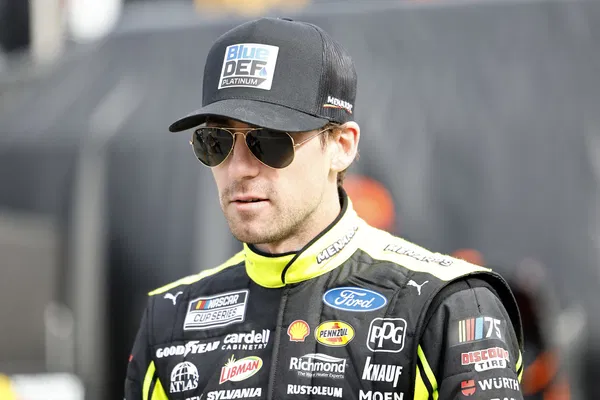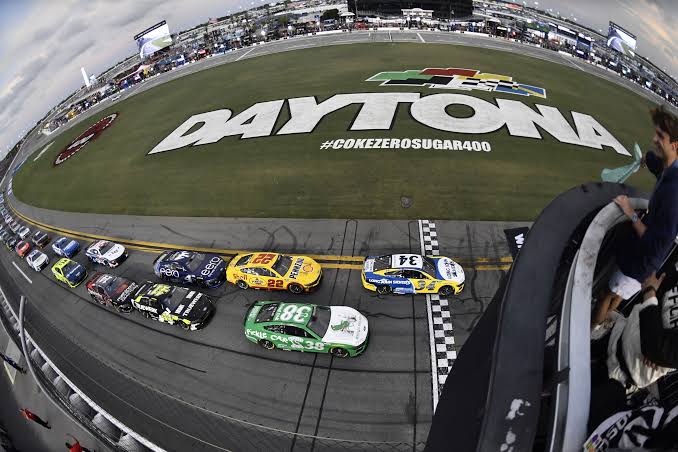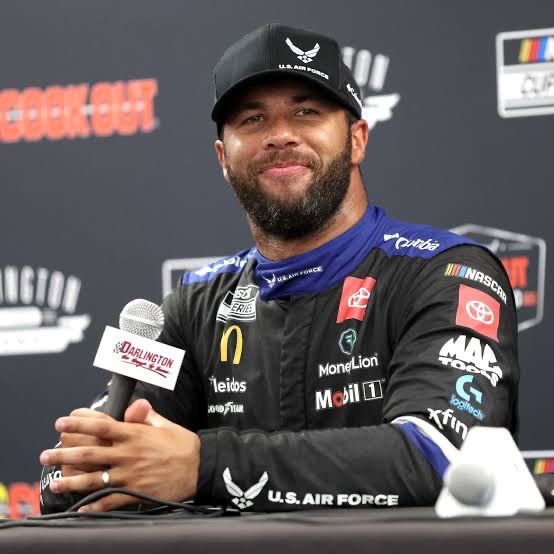The unexpected is always around the corner in NASCAR, but few could have predicted what unfolded during a recent playoff race. Ryan Blaney, the reigning Cup Series champion, found himself crashing out on the very first lap of the race at Watkins Glen, much to the shock of his fans. Drivers were just settling into their rhythm when a collision between Corey LaJoie and Kyle Busch led to an incident that left Blaney’s car severely damaged. Blaney’s frustration, however, was not just aimed at the crash but also at a NASCAR rule that he believed unfairly prevented him from re-entering the race.
After the incident, Blaney and his team worked to repair the car, but NASCAR’s Damaged Vehicle Policy (DVP) stopped them from returning to the track. The DVP enforces strict rules about how damaged cars are handled, and once Blaney’s car was towed to the garage, it was disqualified from continuing. In the heat of the moment, Blaney voiced his frustration, but NASCAR officials later explained that they were simply following an established rule designed for safety.
Blaney’s initial outburst sparked a debate among fans and insiders, but the situation became clearer once the rule’s full context was explained. NASCAR’s Cup Series managing director, Brad Moran, clarified in a Sirius XM NASCAR interview that the DVP has been in place since 2017 to maintain fairness and safety. The rule states that if a damaged car is unable to make it back to pit road on its own and is towed to the garage, it is no longer eligible to rejoin the race. This was exactly what happened to Blaney’s No. 12 Ford at Watkins Glen.
Moran explained that while Blaney’s frustration was understandable, the officials were just enforcing the rules as written. “If you are in an incident and you’re on the DVP, you cannot drive the vehicle back to your pit stall. You are out of the race at that point. If you drive it into the garage or behind the wall, at that point you’re out of the race. You have to go to the care center,” Moran said. He added that the DVP rule was put in place by the industry in collaboration with safety and efficiency in mind.
Despite the controversy that followed Blaney’s mishap, Moran further pointed out that the damage to Blaney’s car was so severe that continuing would have been impossible anyway. “It was totally unfortunate. I totally get Blaney’s frustration. But he was involved in that incident with the 6, which did end up busting the front suspension or steering, I believe, and it was the end of it all,” Moran explained. This statement reinforced the fact that the rule had been correctly applied, and it was unlikely that Blaney would have been able to return to competitive racing even if given the chance.
Blaney’s frustration stemmed from the belief that NASCAR was too rigid in enforcing the rule. He argued that teams should be given more flexibility to repair their cars and get back into the race, especially when the damage is relatively minor. In his case, he believed that his team could have fixed the problem and returned to the track. However, NASCAR and other drivers, including Denny Hamlin, supported the rule’s enforcement, saying that bending the rules would lead to inconsistency and further issues down the road.
Denny Hamlin, who has had his own share of wrecks and spins, sided with NASCAR’s decision. Hamlin pointed out that the rule was put in place not only for safety but also as a cost-cutting measure. In years past, teams would spend excessive amounts of money on repairing cars during the race, which could lead to further incidents due to debris or poorly repaired vehicles. “They went by the rules. I’m not saying he’s wrong and NASCAR’s right, I’m just saying they went by the rules,” Hamlin said. He emphasized that while Blaney’s frustration was valid, changing the rules in response to one incident would not be the right move. “Should we kneejerk reaction just change it because there’s an uproar? Absolutely not,” Hamlin added.
Blaney also argued that NASCAR allows cars with flat tires to be towed back to pit road and continue the race, so why not allow his damaged car the same chance? However, Brad Moran clarified that the flat tire recovery program is a completely different situation, as it involves minimal damage and poses less of a safety risk than a car with major mechanical issues.
Ultimately, Ryan Blaney’s frustration is understandable, but the rulebook is clear on this matter. Both NASCAR officials and drivers like Hamlin have defended the DVP, pointing out that its purpose is to maintain fairness and ensure safety on the track. As the playoffs continue, Blaney will undoubtedly be hoping to avoid further mishaps and focus on his racing, knowing that the rules are unlikely to change anytime soon. The incident at Watkins Glen serves as a reminder that in NASCAR, as in all sports, sometimes the rules work against you, but they exist for the greater good of the competition.
NASCAR Director Ignores Ryan Blaney’s Heated Rant—But Did He Make the Right Call on the Controversial DVP Ruling?




